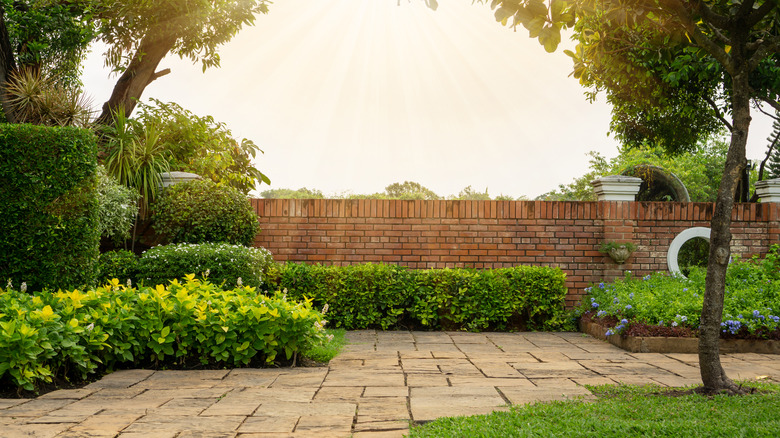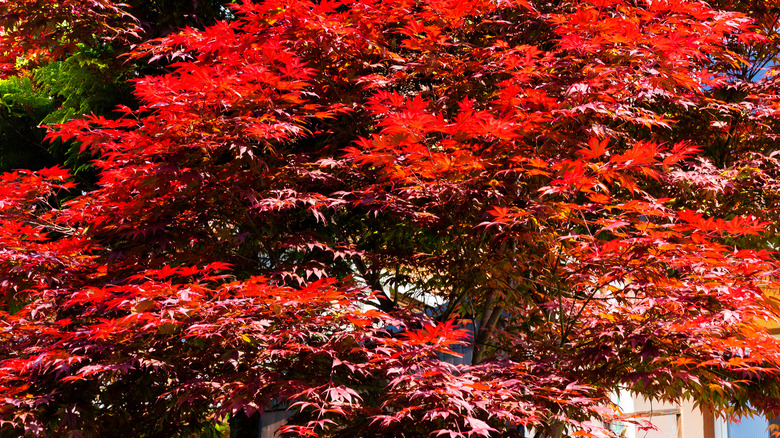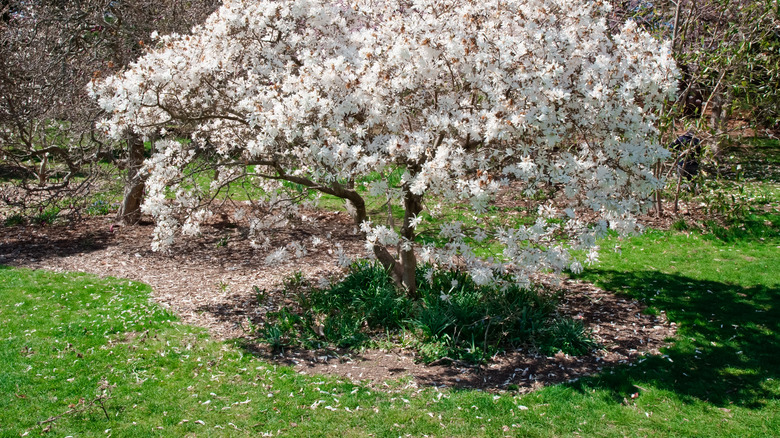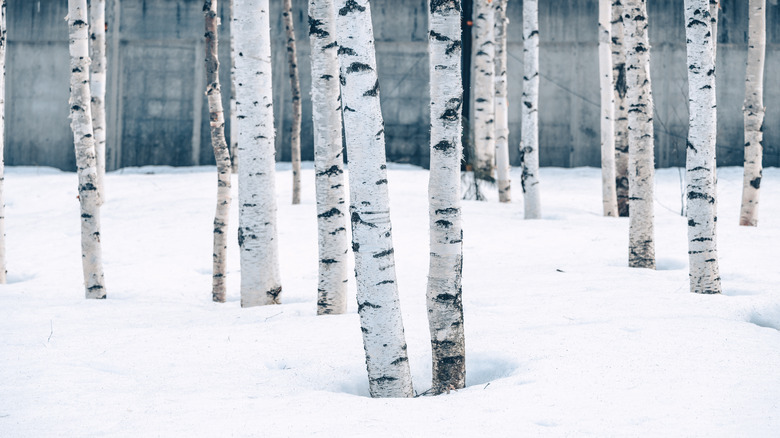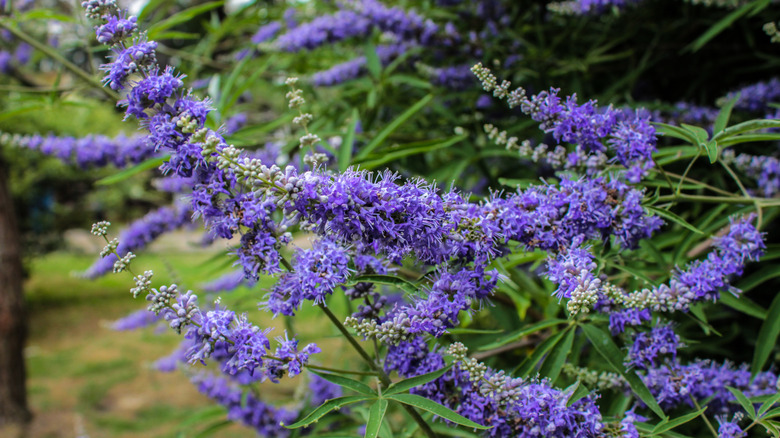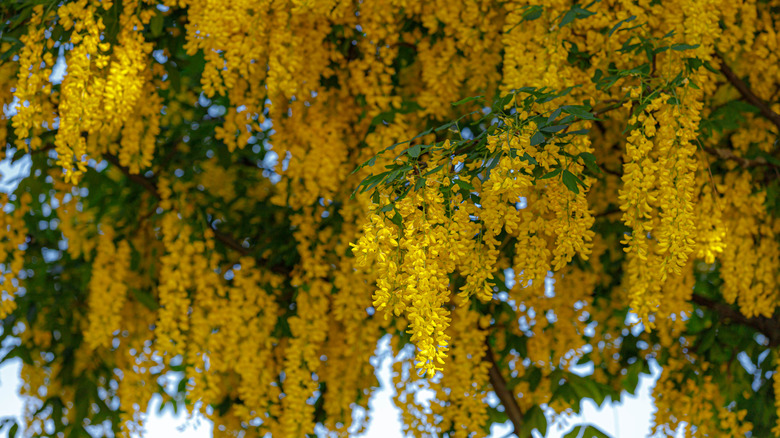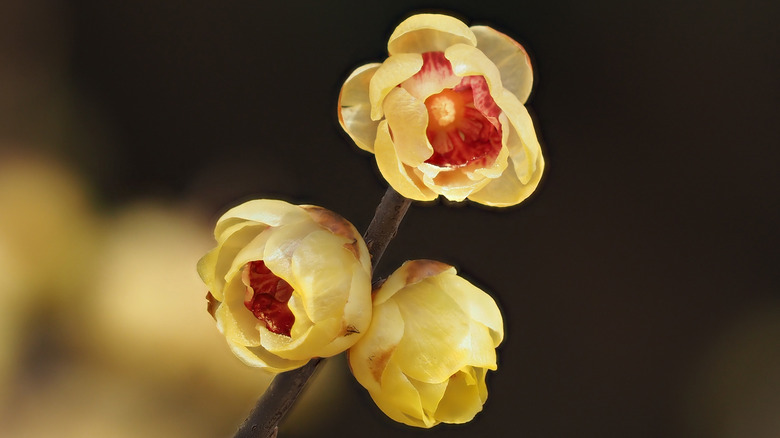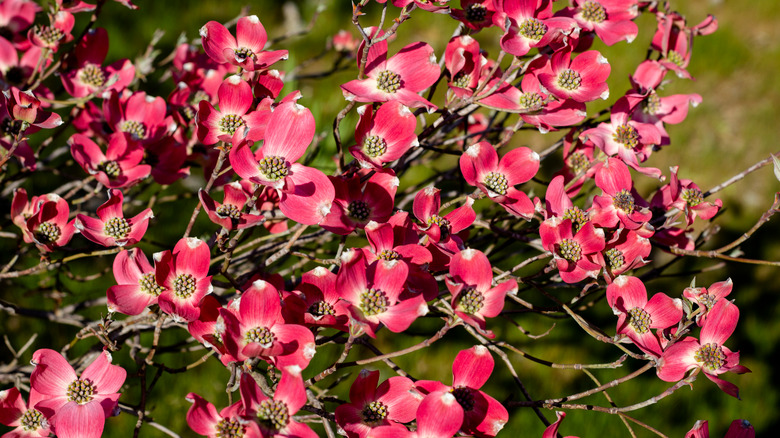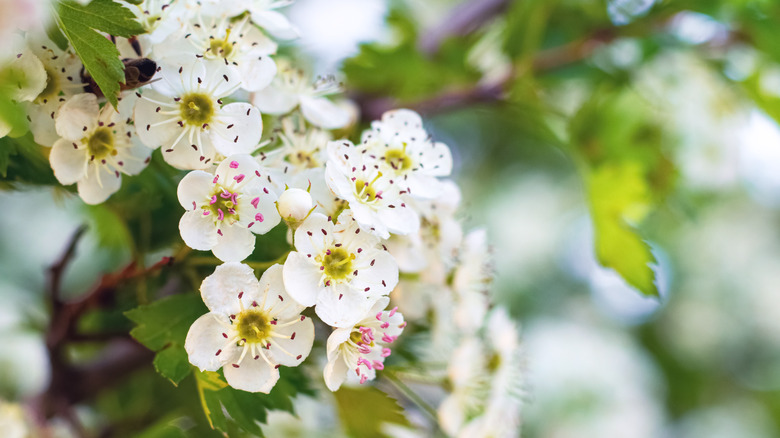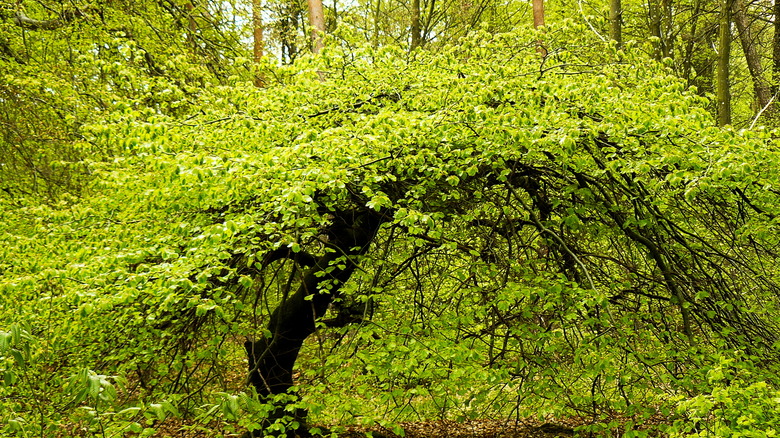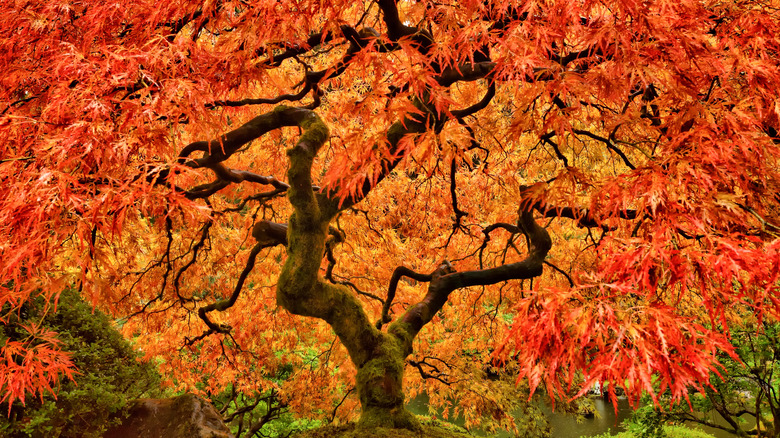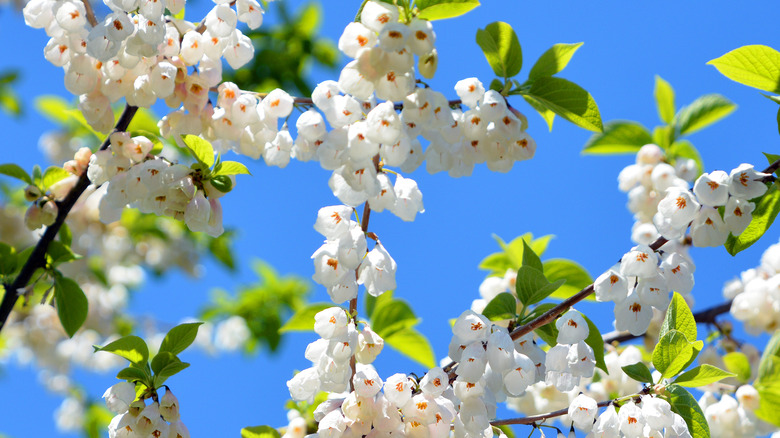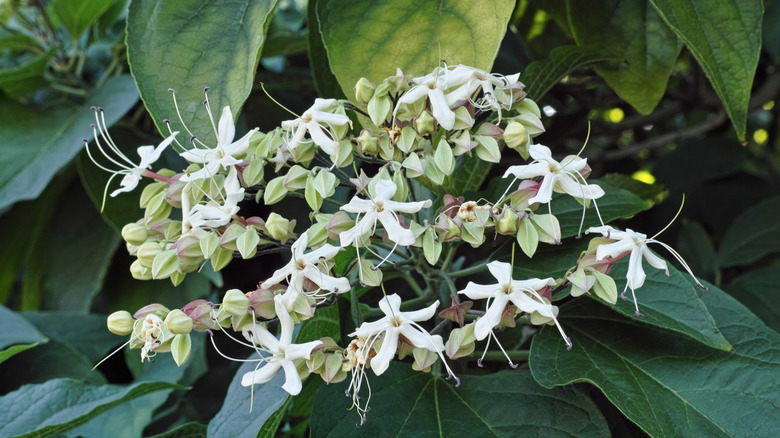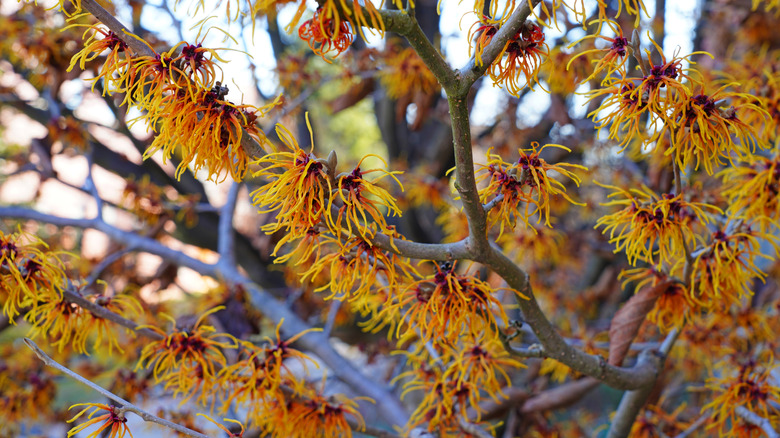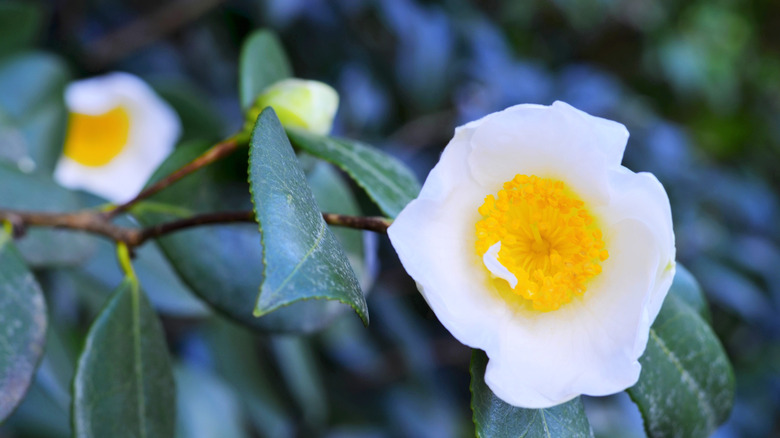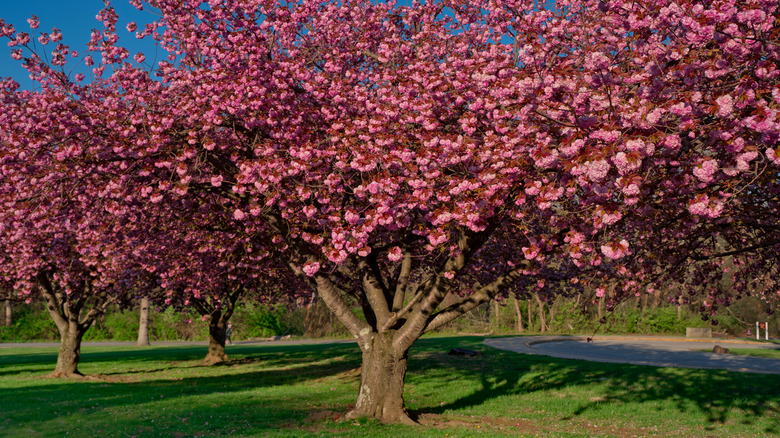15 Small Trees That Love Full Sun
Depending on where you live, you're probably experiencing full beams of sunlight pretty much every day right now. The summer heat and shine aren't just enjoyable for people, though, but also for our sun-loving plants that desire yellow, bright light to grow. This season is also a great time to look at your yard and garden and ponder about the different ways you can change its look; whether it's by adding colorful flowers, large bushes, or more greenery, the choices are pretty much endless. But, adding different levels of height would be a fun design tactic to look into as well.
Adding different heights may sound confusing, but can be easily done by implementing a few small trees in your yard or around your garden. They don't have to be enormous to be impactful, as long as their height from the rest of your plants is significant. The Garden Design Co. says that adding different levels of height to your garden can make it look more interesting while also providing you with a bit of privacy. In the end result, your garden and lawn will look more harmonious if different plants of different heights are smoothly designed together.
Orangeola Japanese maple
Lovers of fall will enjoy the orangeola Japanese maple tree (acer palmatum) because the colors of the leaves change from green to purple, and eventually a gorgeous shade of orange in the fall, according to Monrovia. It's usually about 4 feet tall and 3 feet wide and can grow up to 8 feet tall later in its life. The color, height, and beautiful curved design can be a perfect backdrop or focal point. This small tree enjoys full sun and thrives in USDA zones 5 to 8.
Star magnolia
The star magnolia tree (magnolia stellata) is the smallest when compared to other types of magnolia plants, and it shows off a puff of white flowers at the start of spring, according to Wisconsin Horticulture. It can grow up to 15 feet to 20 feet tall, but the shape and size can be kept down with some pruning. This small tree is also known to grow colorful fruit and seeds that pop open at the beginning of the fall. It enjoys the sun while sitting in organic soil that is kept moist.
Gray birch
The gray birch tree (betula populifolia) grows well in USDA zones 3 to 6 and can grow anywhere from 20 feet to 40 feet high, according to Garden Design. The bark of this tree is grayish white and will be best for those who live in cooler climate temperatures but will also survive the sunlight. It doesn't need much care, as it does well in poor soils and conditions that are dry and wet. The white bark and dark green leaves can serve as an excellent contrast to your other plants.
Chaste tree
The chaste tree (vitex agnus-castus) does very well in high temperatures, especially in USDA zones 7 and 8, according to North Carolina Extension Gardener. Depending on how you prune a chaste tree, it can grow up to 20 feet tall, and it typically grows about 24 inches per year. It typically blooms in the spring and summer and showcases its pink, lavender, or white fragrant flowers that are arraigned in 12 inches long groupings.
Golden chain tree
The golden chain tree (laburnum watereri) is a magnificently beautiful tree with golden flowers that drape down like a gorgeous dress, according to WSU Clark County Extension. It can grow up to 15 feet tall with a 10-foot width while in the sun, and hummingbirds and bees tend to enjoy the pea-shaped flowers. The flowers bloom from May to June, and the tree enjoys zones 5 through 7. It's advised not to prune this tree, as you can accidentally ruin its natural, beautiful form.
Wintersweet tree
The wintersweet (chimonanthus Praecox) isn't just a beautiful tree with beautiful, fragrant flowers in colors of cream and purple, but it also produces fruit, according to North Carolina Extension Gardener. It grows 10 feet to 13 feet tall, and the flowers typically bloom in the spring and winter time. This tree loves sunlight and attracts hummingbirds and songbirds, which adds to its overall beauty. It grows well in USDA zones 7 through 9 and is seen in the Southeastern region.
Flowering dogwood
The flowering dogwood tree (cornus florida) is capable of 15 feet to 25 feet tall growth and needs to be planted in well-drained soil that contains organic material while also being exposed to full sunlight, according to the North Carolina Extension Gardener. It's a tree that produces green leaves with shades of red, as well as red berries to match. Its pink and white flowers typically bloom in the spring, and you'll see its fruit pop out during the fall. It's commonly seen in areas such as Ontario, Canada, as well as a plethora of U.S. states in the Midwest and East coast.
Hawthorn
The hawthorn (crataegus) grows well in the full sun in USDA zones 3 to 8 and can reach anywhere between 25 feet to 35 feet high, with a similar width, according to the University of Minnesota. This tree can grow in urban areas in all kinds of soil but would prefer it to be moist and well-drained. Either white or pink flowers bloom in the spring — but don't let their beauty trick you — because 1-inch to 3-inch thorns typically grow on the branches.
Dwarf chestnut oak
The dwarf chestnut oak (quercus prinoides) is a tree that enjoys the sun while sitting in rocky or sandy soil in areas, such as woodlands, according to the North Carolina Extension Gardener. It grows up to 12 feet tall and 25 feet wide and grows well in the north coast and east coast — USDA zones 5 through 8. Acorns typically are available in the fall, but it will take three to five years before they are ready.
Japanese maple
The Japanese maple tree (acer japonicum) grows best in the sun when placed in soil that is moist and filled with organic material — it must also be well-drained as well, according to Gardenia. This tree can grow 10 feet to 25 feet tall, However, although this tree can tolerate the sun, it doesn't do too well in areas where there are high temperatures. It grows red or green foliage depending on sun exposure and is seen in all types of gardens; cottage gardens, city gardens, rock gardens, and more.
Carolina silverbell
The Carolina silverbell tree (halesia carolina) is typically found in North Carolina — which explains the name — but is also found in other mountain regions where there is a moist environment, according to North Carolina Extension Gardener. It does well in all shades of sun and has a wide range of growth as it can grow anywhere from 10 feet to 40 feet high. It blooms in the spring and displays white or pink, bell-shaped flowers that create a stunning visual. Those in USDA zones 7 and 8 can enjoy having this gorgeous tree in your yard.
Harlequin glorybower
The harlequin glorybower tree (clerodendrum trichotomum) is also known as the peanut butter tree because it gives off a peanut butter smell after you crush the leaves, according to the North Carolina Extension Gardener. It grows 10 feet to 20 feet high, with the same width dimensions, and stays healthy in the sun. It prefers well-drained soil, and it eventually produces 6-in to 9-in white flowers in the fall. USDA zones 7 through 9 usually enjoy their beautiful appearance and peanut butter smell.
Witch hazel
The witch hazel tree (hamamelis virginiana) typically grows 10 feet to 15 feet tall but can occasionally be 35 feet in height, according to the Lady Bird Johnson Wildflower Center. If more sun is exposed to this tree, its shape will be more balanced. Its yellow witch hazel flowers, which admit a soft fragrance, pop out during the fall in an irregular shape — perfect for the spooky months. It prefers well-drained soil that is a medium loam, and it cannot handle environments that are very dry.
Franklin tree
The franklin tree (franklinia alatamaha) can grow 10 feet to 20 feet high and loves to stay in the sun, according to Gardenia. This tree is easy to take care of, but it does prefer soil that contains organic material and is well-drained. It produces large, white flowers that produce a sweet fragrance that blooms over the course of several weeks during the spring and summer. This tree can also tolerate most zones so that many gardeners can enjoy it.
Crabapple tree
The crabapple (malus sylvestris) tree enjoys sitting in a sunny spot with moist soil in order to produce the most fruit, according to the North Carolina Extension Gardener. Its fruit colors are typically gold, green, and burgundy red When eating the apples, it's advised to remove the seeds. Its flowers bloom in the spring and are either pink or white, creating an overall fresh appearance when combined with the fruit. Garden Design says the average height for this tree is 15 feet to 20 feet tall.
